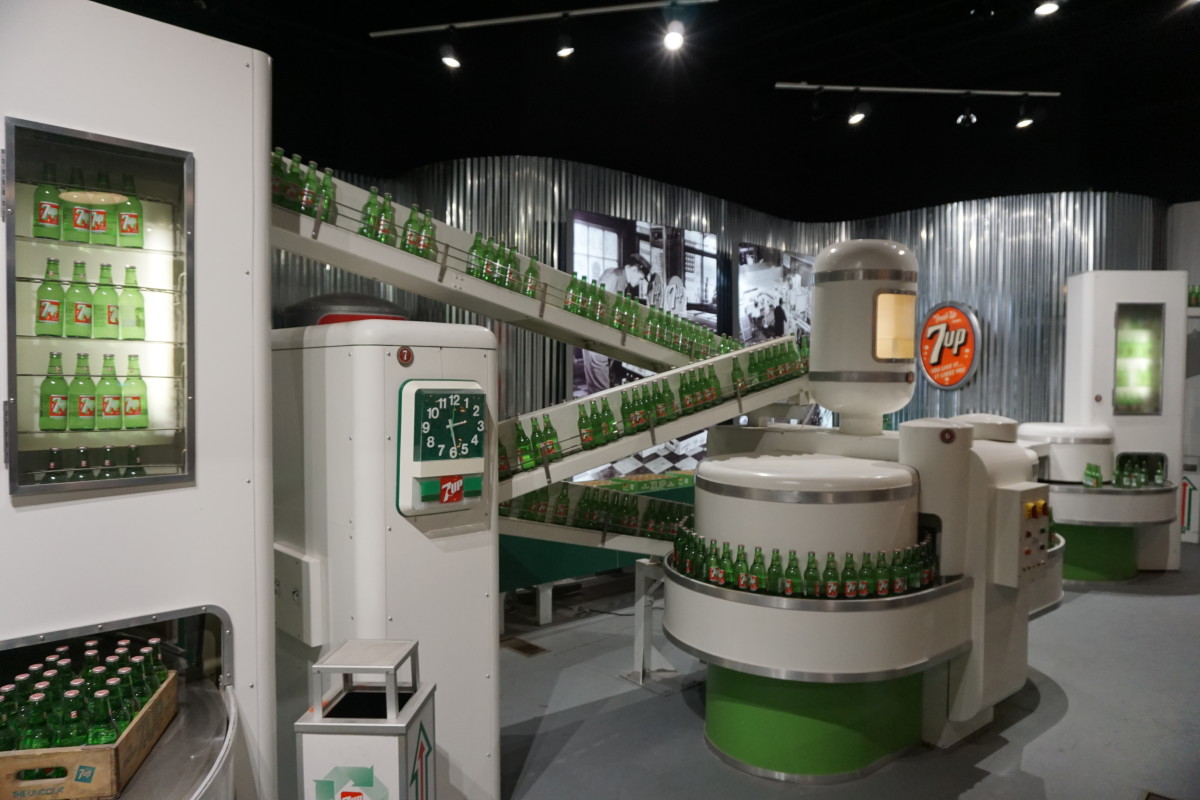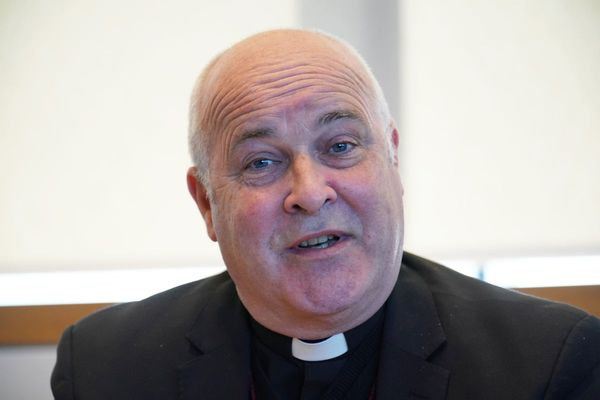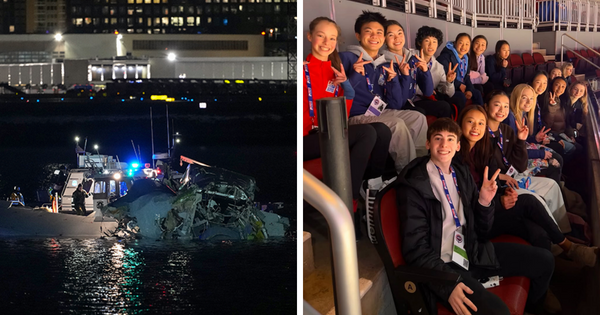
Thirsting for a fizzy treat with a lemon-lime twist? Steering clear from caffeine, but craving something sweeter than water?
For decades, people reached for 7 Up, the crystal carbonated beverage that was celebrated for everything it wasn’t: lighter and fruitier than Coca-Cola or Pepsi, with less sugar and zero caffeine.
Savvy advertisers honed in on these qualities through their “Uncola” ad campaigns, and by the 1970s, 7 Up had become the world’s #3 best-selling soft drink.
Not only was it a popular thirst quencher — 7 Up was also a key recipe ingredient: Consumers baked it into jello molds as a dessert, mixed it with Seagram’s 7 Crown whiskey as part of the 7&7 cocktail, and even included it in vegetable dishes, like creamed broccoli and carrot casseroles.
Related: History of Coca Cola: Timeline & Facts
It wasn’t until the advent of artificial sweeteners — notably Diet Coke’s introduction in 1983 — that 7 Up began its descent into soft-drink obscurity. Family-owned for much of this time, 7 Up was acquired first by Philip Morris and later by Cadbury Schweppes; in 1986, the brand was dethroned as the king of lemon-lime sodas by Sprite, a Coca-Cola-owned competitor.
By shoring up celebrity endorsements from the likes of LeBron James and Kobe Bryant and, later, J. Cole and Drake, Sprite was able to reach new Millennial demographics, quickly rising, like its effervescent bubbles, to dominate the non-traditional soda market.
By 2022, 7 Up’s sales were flatter than day-old carbonation, encompassing less than 3% of the total soft drink market, according to Beverage Digest. And while 7 Up is still around today, it’s not as widely available as other soft drinks, particularly in restaurants, which purchase soft drink syrups in bulk quantities.
Unless 7 Up can reposition itself to appeal to changing consumer tastes, it could face a similar fate to Sierra Mist, the lemon-lime soft drink PepsiCo killed off in 2023.

A short history of 7 Up
Good thing 7 Up didn’t stick with its original name: It was first known as Bib-Label Lithiated Lemon-Lime Soda when it was introduced in 1929, but its inventor, Charles Leiper Grigg, shortened it to the no-doubt catchier 7 Up in 1936.
Grigg was a triple threat: Skilled in science, he also worked in the St. Louis advertising industry, so he understood his audience as well as the pipeline he would need to deliver his products.
Grigg’s first concoction was an orange-flavored beverage called Whistle. Disappointed by weak sales, he gambled on another citrus-flavored drink named Howdy that had a staggering 14% sugar content, but neither could match the success of Orange Crush, one of the era’s most popular beverages, and so Grigg shifted his energies to the lemon-lime flavor arena.
According to Cadbury Schweppes, Grigg spent two years perfecting his 7 Up recipe with a stated goal to create a “wholesome and distinctive soft drink” that would “prove irresistible” to Americans — something subsequent generations might reframe as “addictive,” because the earliest 7 Up concoctions actually contained lithium.
More about brands:
- History of McDonald's: Timeline and facts
- History of Nike: Company timeline and facts
- History of Tesla & its stock: Timeline, facts and milestones
At the time, it wasn’t too unusual for beverages to be infused with chemical compounds or grain alcohols — in fact, there was a whole beverage niche known as “patent medicine tonics,” said to cure a variety of ailments.
For instance, Coca-Cola was infused with trace amounts of cocaine extracted from the coca leaf, once thought to cure nerve disorders and indigestion; another drink, Moxie, contained the extract of an unnamed South American plant that, when ingested, would prevent paralysis, or the “softening of the brain.”
The lithium citrate compound added to 7 Up was used to treat mental illnesses like bipolar disorder and depression, but it only took a few years for the FDA to ban these substances — in 7 Up’s case, lithium citrate was removed, and the beverage was reformulated in 1948.
7 Up made its debut in early October 1929, just a few weeks before the Wall Street crash that ushered in the decade-long Great Depression. Soda cost a nickel then, which, accounting for inflation, would be worth about $4.50 today.
When you consider that half of the American population was affected by the Great Depression, with thousands joining bread lines for free sustenance each day, it becomes clear that only those beverages with true mass appeal could have survived such a crisis. 7 Up emerged as a clear winner — perhaps because of those mood-altering properties.
What happened to 7 Up? The brand's decline explained
According to Brand Directory, which calculates brand value using a host of quantitative and qualitative metrics, including revenues, analyst forecasts, and surveys of more than 100,000 consumers, by 2023, 7 Up hadn’t even cracked the Top-10 list of non-alcoholic drink brands.
Top non-alcoholic drinks in 2023
| Brand | Position |
|---|---|
Coca-Cola |
1 |
Pepsi |
2 |
Red Bull |
3 |
Monster |
4 |
Nescafe |
5 |
Gatorade |
6 |
Dr Pepper |
7 |
Sprite |
8 |
Nongfu Spring |
9 |
Lipton |
10 |
Nespresso |
11 |
7 Up |
12 |
So, what happened?
Bottling woes
Critics point to 7 Up’s downfall beginning with its acquisition by Philip Morris, who didn’t give the brand's bottling companies as much attention as Coca-Cola and PepsiCo.
These companies purchased the soft drink syrup, mixed it with carbonated water, and then packaged and distributed it to retail outlets. As a result, these bottlers were not as incentivized to promote 7 Up as heavily through in-store displays, and since consumers have notoriously short memories, 7 Up’s sales began to slip.
In addition, by the 1980s, both Coca-Cola and Pepsico had streamlined their bottling systems, which increased their operational efficiency. 7 Up simply couldn’t keep up.
Recipe changes, competition from Sprite, and lawsuits
Between 1996 and 2006, 7 Up’s recipe changed three times, each in an attempt to enhance its lemon-lime flavor and better compete against Sprite. And in 2007, 7 Up faced a lawsuit from the Center for Science in the Public Interest for misleading the public by claiming the soft drink was “all-natural” because it contained high-fructose corn syrup.
Marketing to children
For decades, advertisers pushed sugary cereals and high-calorie foods, like soda, on children and teenagers. But in 2006, 21 of the leading U.S. Food and beverage manufacturers pledged to stop advertising unhealthy food to children under age 12.
Known as the Children’s Food and Beverage Advertising Initiative, the initiative was signed by Kraft, Kellogg’s, McDonald’s, Coca-Cola, and 7 Up’s current owner, Keurig Dr Pepper, among others.
Declining cultural appetite for sugary beverages
According to The New York Times, sales of full-calorie soft drinks dropped 25% between 1995 and 2015 as Americans tried to eat better to stay healthier. Beverage manufacturers, like Coca-Cola, Pepsico, and Keurig Dr Pepper, were quick to respond to changing tastes by acquiring new lineups of lower-calorie soft drinks, teas, flavored waters, and energy drinks.
What does the 7 Up brand name mean?
As to its name? No one knows for sure just exactly what “7 Up” signifies, but some think it refers to the atomic mass of lithium, which is 7, and an “upper” or a mood lifter.
Who owns 7 Up?
After Grigg’s death in 1940, Hamblett Charles Grigg, his son, took over the business. “Ham” as he was known, ran the 7 Up Company until he died in 1978. The next year, 7 Up was acquired via an aggressive takeover by Philip Morris.
In 1986, its domestic operations were relocated from St. Louis to Dallas and sold to an investment firm, Hicks and Hass, which merged it with the Dr Pepper Company in 1988. 7 Up’s international operations were sold to PepsiCoPEP; in 1995, both U.S. operations were acquired by Cadbury Schweppes, which later became Keurig Dr PepperKDP.
What are 7 Up’s best commercials?
Before 7 Up faded into soda obscurity, the brand was well-known for its creative ad campaigns, including the "Uncola," "spot," and "Make 7 Up Yours" commercials.
The “Uncola:” 1969–1985
7 Up enjoyed a 36-year partnership with the Chicago-based J. Walter Thompson (JWT) advertising agency, which created the brilliant “Uncola” advertising campaign.
First aired in 1967, it pitted 7 Up against the traditional soft drink giants, Coke and Pepsi, by highlighting the clear beverage’s differences. Such “anti-establishment” themes worked quite well during this countercultural era, where young people protested the Vietnam War and fought to gain equality through the Civil Rights movement.
7 Up’s ads were often set in beachy, naturalistic locales starring Geoffrey Holder, an Afro-Caribbean actor, which was also considered revolutionary for the time. (Holder would go on to play a James Bond villain in the 1973 film “Live and Let Die.”) According to the BAER marketing tracking firm, “Uncola” lifted 7 Up’s sales by an astounding 56% in just one year.
“Spot:” 1987–1997
Hopping aboard the 1980s animation craze that produced the California Raisins, Cheetos’ Chester Cheetah, and Domino Pizza’s Noid, 7 Up unveiled Spot, a red dot infused with lifelike qualities, like hands, sneakers, tinted sunglasses — and a cool attitude.S
pot made cute, high-pitched exclamations while magically transforming glasses of cola into 7 Up’s refreshing “Uncola.” Spot was so appealing that it got its own video game adaptation in 1990 called “Spot: The Video Game,” produced for Atari, Nintendo, Gameboy, Atari, and DOS computers. In it, Spot routinely found itself in sticky situations that could only be resolved through its soda bubble powers.
Subsequent editions were released: “Spot: The Cool Adventure” was produced exclusively for Gameboy in 1992; “Cool Spot,” released in 1993, was compatible with the Super Nintendo Entertainment System and Sega Genesis, and 1995’s “Spot Goes to Hollywood” was made for Sega Saturn, Sega Genesis, and PlayStation 1 systems. “Cool Spot” alone sold one million copies.
“Make 7 Up Yours:” 1999–2005
7 Up had hired Young & Rubicam to create an edgier ad campaign that starred stand-up comedian Orlando Jones, who haplessly introduced viewers to new ways to make the soft drink a part of their daily lives.
In one commercial, Jones strolled down the street wearing a t-shirt that said “Make 7” on one side and “Up yours” on the back. Another commercial featured Jones in prison telling a risqué joke involving a bar of soap, but the campaign had gone too far. Denounced by scores of civil rights groups, 7 Up apologized and took it off the air in 2002.
However, according to Effie.com, the campaign did what it was intended to do, as it increased brand awareness among a key demographic, 12–24-year-olds, by 71%.
View the original article to see embedded media.
What is 7 Up doing to stay relevant?
In 2023, 7 Up rebranded itself through a “refreshingly modern” new ad campaign that aimed to promote positivity, surprise, and “UPliftment.” According to a company press release, the campaign, entitled “New Getup, Same 7 Up” features a new design for its bottles and cans using zesty citrus tones that are meant to evoke a sense of energy.
“7UP has always provided people with refreshing UPliftment through consumption and that's why it feels like a natural fit for us to drive this narrative forward and center UPliftment within everything we do.”
—Eric Melis, Pepsico Senior Vice President Global Brand Marketing
In addition, 7 Up introduced a new, sugar-free, fat-free beverage, 7 Up Zero Sugar, which also contained no sodium. The product is now available in 76 global markets.
Did 7 Up change its name?
7 Up has not changed its name, but Sierra Mist, a similar caffeine-free drink manufactured by PepsiCo, went out of business in 2023. Pepsi revamped its lemon-lime recipe and introduced a new brand, Starry, in early 2024, which, according to taste testers, is less sweet and more citrus-forward.
Related: Veteran fund manager picks favorite stocks for 2024







